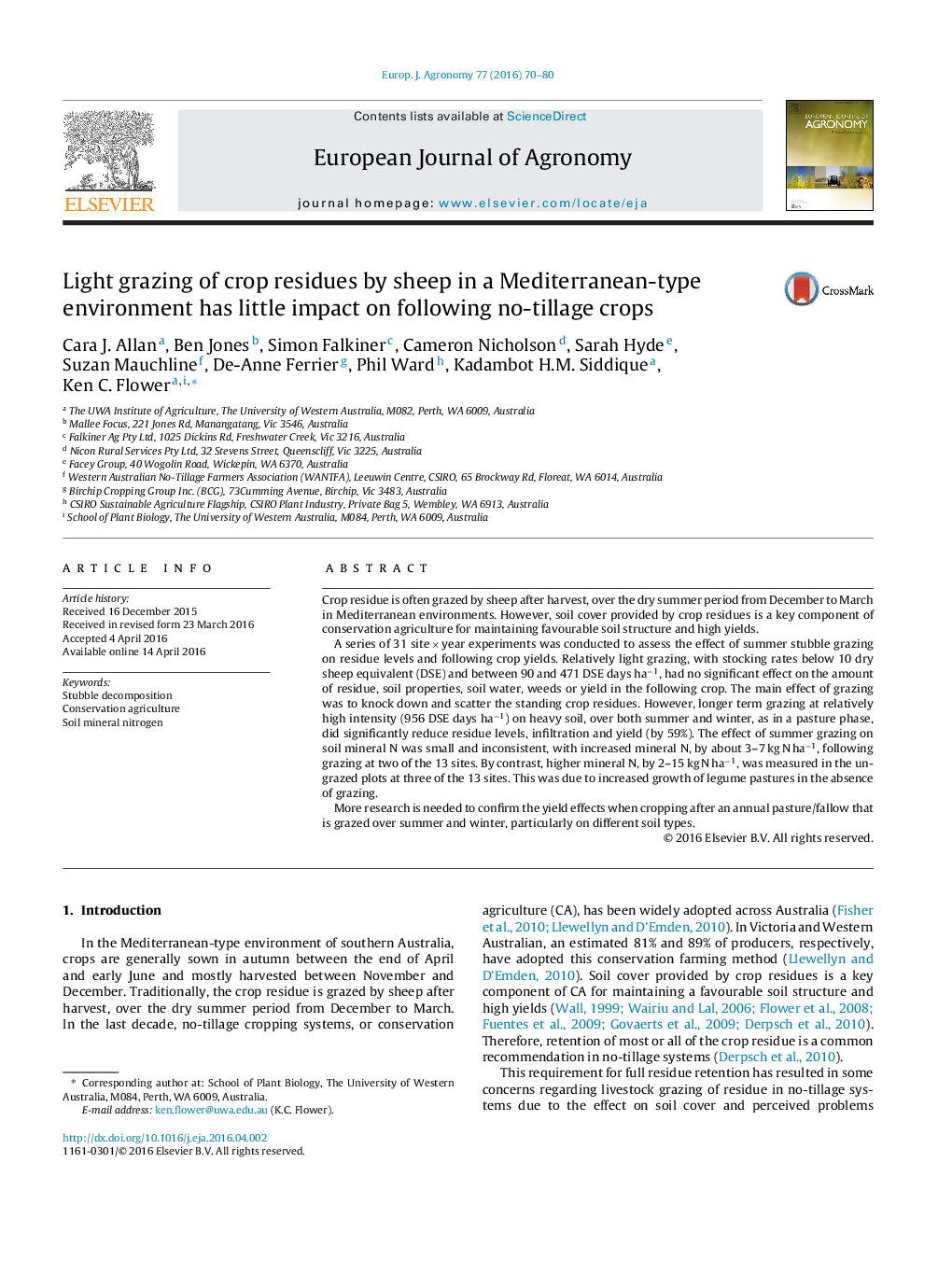| کد مقاله | کد نشریه | سال انتشار | مقاله انگلیسی | نسخه تمام متن |
|---|---|---|---|---|
| 4508733 | 1624448 | 2016 | 11 صفحه PDF | دانلود رایگان |
• Light grazing by sheep had no impact on the amount of residue or crop yield.
• The main effect of grazing was to scatter the standing residue.
• Grazing over both summer and winter reduced crop yield on heavy soil.
• The effect of grazing on soil nitrogen was inconsistent.
Crop residue is often grazed by sheep after harvest, over the dry summer period from December to March in Mediterranean environments. However, soil cover provided by crop residues is a key component of conservation agriculture for maintaining favourable soil structure and high yields.A series of 31 site × year experiments was conducted to assess the effect of summer stubble grazing on residue levels and following crop yields. Relatively light grazing, with stocking rates below 10 dry sheep equivalent (DSE) and between 90 and 471 DSE days ha−1, had no significant effect on the amount of residue, soil properties, soil water, weeds or yield in the following crop. The main effect of grazing was to knock down and scatter the standing crop residues. However, longer term grazing at relatively high intensity (956 DSE days ha−1) on heavy soil, over both summer and winter, as in a pasture phase, did significantly reduce residue levels, infiltration and yield (by 59%). The effect of summer grazing on soil mineral N was small and inconsistent, with increased mineral N, by about 3–7 kg N ha−1, following grazing at two of the 13 sites. By contrast, higher mineral N, by 2–15 kg N ha−1, was measured in the un-grazed plots at three of the 13 sites. This was due to increased growth of legume pastures in the absence of grazing.More research is needed to confirm the yield effects when cropping after an annual pasture/fallow that is grazed over summer and winter, particularly on different soil types.
Journal: European Journal of Agronomy - Volume 77, July 2016, Pages 70–80
